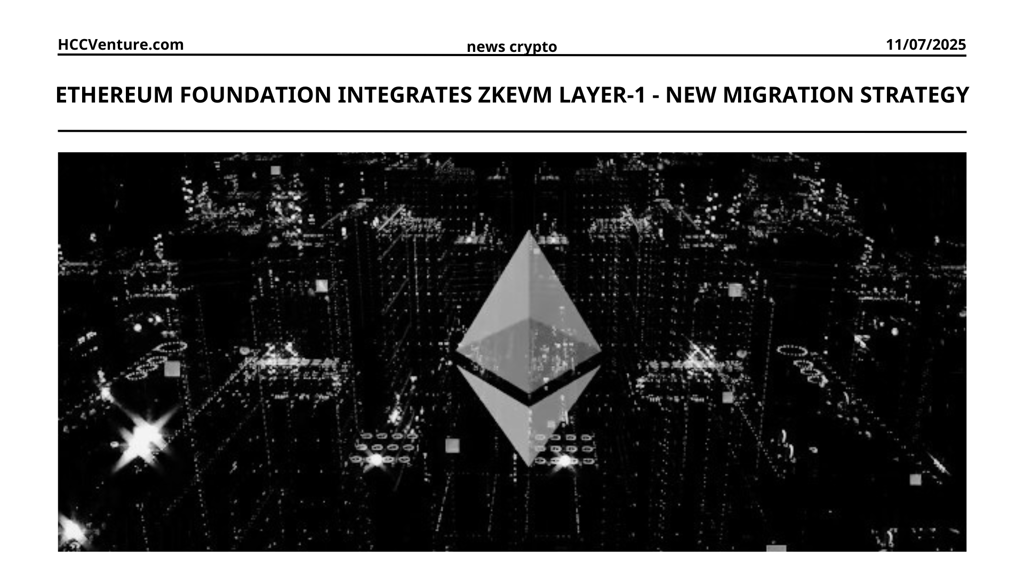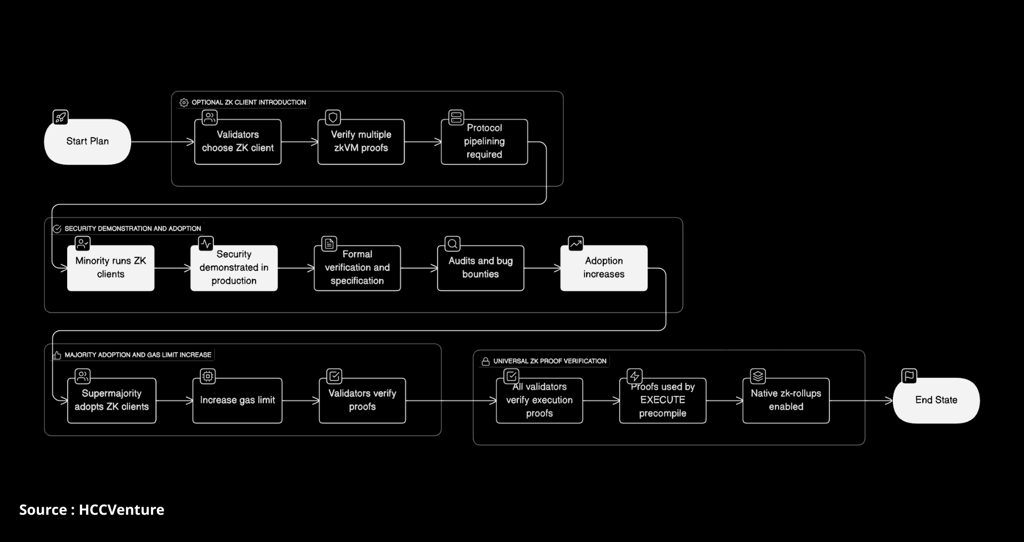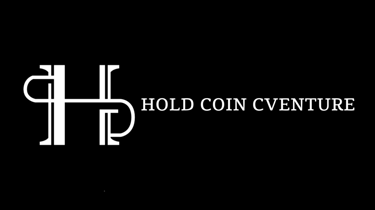Ethereum Foundation Plans to Integrate zkEVM Layer-1
The Ethereum Foundation (EF) has announced plans to integrate zero-knowledge Ethereum Virtual Machine (zkEVM) technology directly into Layer-1, with the goal of making Ethereum the largest zero-knowledge (ZK) blockchain network by 2026.
TIN TỨC
7/11/20254 min read


zkEVM Layer-1 Integration Plan
Integrating zkEVM into Layer-1 is a strategic step to bring zero-knowledge proofs (ZKPs) from Layer-2s like zkSync, Scroll, and Taiko to Ethereum’s base layer. Currently, Ethereum processes around 15 transactions per second (TPS) on Layer-1, with average gas fees ranging from $5-20, making it difficult for individual users and DeFi protocols.
With zkEVM, Ethereum can increase TPS to hundreds or thousands, while reducing gas fees to under $0.50, similar to Layer-2s like Scroll (which reduced gas fees by 34% after a recent upgrade).
The plan solidifies Ethereum’s position in DeFi, where the network accounts for 51% of the global total value locked (TVL), or $61.7 billion, and leads the real-world asset (RWA) tokenization market with $4.6 billion. The “realtime proving” standard for zkVM will reduce transaction latency to under 10 seconds (from the current 12 seconds), making Ethereum competitive with Solana (2,000 TPS) and BNB Chain (500 TPS). By integrating zkEVM into Layer-1, Ethereum not only improves performance but also reduces its reliance on Layer-2, retaining developers and users.


The urgency of this plan stems from competitive pressure and the need to improve performance. Ethereum has been criticized for its slow transaction speeds and high gas fees, causing only 15% of DeFi transactions to take place on Layer-1, while Layer-2s like Arbitrum ($3.2 billion TVL) and Optimism ($1.8 billion TVL) are attracting the majority of activity. Rival blockchains like Solana, with $0.01 fees, and BNB Chain, with $0.05 fees, are gaining market share thanks to their speed and low costs.
The success of Layer-2 ZKs such as zkSync ($1.2 billion TVL) and Scroll ($800 million TVL) has demonstrated the potential of ZK technology to increase TPS and reduce costs. EF finds that integrating zkEVM into Layer-1 will help Ethereum directly benefit from these benefits, while also bolstering confidence from institutional investors, with $1.2 billion inflows into Ethereum ETFs over the past week.
Additionally, the favorable regulatory landscape in the US, with its pro-cryptocurrency policies, has enabled EF to invest heavily in ZK technology, with the goal of completion in less than a year.
How will zkEVM Layer-1 be implemented and what value will it bring?To implement zkEVM Layer-1 in less than a year, EF proposes a fast and secure roadmap. Initially, validators will be given the option to run a ZK client, performing stateless verification by checking three ZK proofs from different zkVMs, each proving independent EVM implementations. With proof sizes under 300 KiB and fast verification times, this allows for the same defense-in-depth mechanism as existing client diversity. The initial proofs will be processed off-chain, requiring only the protocol to provide additional proofing time via the Glamsterdam pipeline.
EF expects only a small number of validators to run the ZK client in the early stages, but security will be proven in production. With a focus on formal verification, specification writing, testing, and bug bounties, EF expects adoption to increase gradually. Once the majority of validators (currently 1.2 million, or 70% of global Layer-1 validators) are comfortable with the ZK client, EF will increase the gas limit, requiring reasonable hardware to verify proofs instead of re-executing blocks. Eventually, these proofs can be used by the EXECUTE precompiler for native zk-rollups. The “proving realtime” standard requires:
Latency: Under 10 seconds for 99% of mainnet blocks (vs current 12 seconds).
Security: 128 bits (minimum 100 initial bits).
Proof size: Under 300 KiB, does not rely on trusted setup.
Hardware: Capital cost under $100,000, power under 10 kW.
Source Code: Fully Open.
Key benefits include:
Scalability: Increase TPS to 1,000-2,000, competitive with Solana.
Reduced costs: Gas fees below $0.50, increasing accessibility.
Security: Maintain decentralization with over 1.2 million validators.
Evaluation and Conclusion
The zkEVM Layer-1 integration plan has the potential to make Ethereum the most powerful Layer-1 blockchain in terms of scalability and security. With TPS increasing to 1,000-2,000 and gas fees below $0.50, Ethereum could attract millions of new users, solidifying its position in DeFi (51% market share) and RWA ($4.6 billion). The project will also leverage the entire zkVM industry, with weekly improvements in performance, to make Ethereum the world's largest ZK application. In the long run, this plan could inspire other blockchains to adopt ZK on Layer-1, creating a more efficient decentralized ecosystem. With $1.2 billion in institutional capital flowing into Ethereum ETFs every week and platforms like Etherealize supporting integration with traditional finance, Ethereum could reach 10,000 TPS by 2027, far ahead of its competitors. However, EF needs to maintain transparency and collaborate with the community to avoid conflicts of interest.
Disclaimer: The information presented in this article is the author's personal opinion on the cryptocurrency field. It is not intended to be financial or investment advice. Any investment decision should be based on careful consideration of your personal portfolio and risk tolerance. The views expressed in the article do not represent the official position of the platform. We recommend that readers conduct their own research and consult with a professional before making any investment decisions.
Compiled and analyzed by HCCVenture
Join HCCVenture here: https://linktr.ee/holdcoincventure
See more latest information :
Explore HCCVenture group
HCCVenture © 2023. All rights reserved.


Connect with us
Popular content
Contact to us
E-mail : holdcoincventure_contact@hccventure.com
Register : https://linktr.ee/holdcoincventure
Disclaimer: The information on this website is for informational purposes only and should not be considered investment advice. We are not responsible for any risks or losses arising from investment decisions based on the content here.


TERMS AND CONDITIONS • CUSTOMER PROTECTION POLICY
ANALYTICAL AND NEWS CONTENT IS COMPILED AND PROVIDED BY EXPERTS IN THE FIELD OF DIGITAL FINANCE AND BLOCKCHAIN BELONGING TO HCCVENTURE ORGANIZATION, INCLUDING OWNERSHIP OF THE CONTENT.
RESPONSIBLE FOR MANAGING ALL CONTENT AND ANALYSIS: HCCVENTURE FOUNDER - TRUONG MINH HUY
Read warnings about scams and phishing emails — REPORT A PROBLEM WITH OUR SITE.
